Ameren Illinois EV Newsletter - Spring 2025
Ameren Illinois EV Newsletter - Spring 2025
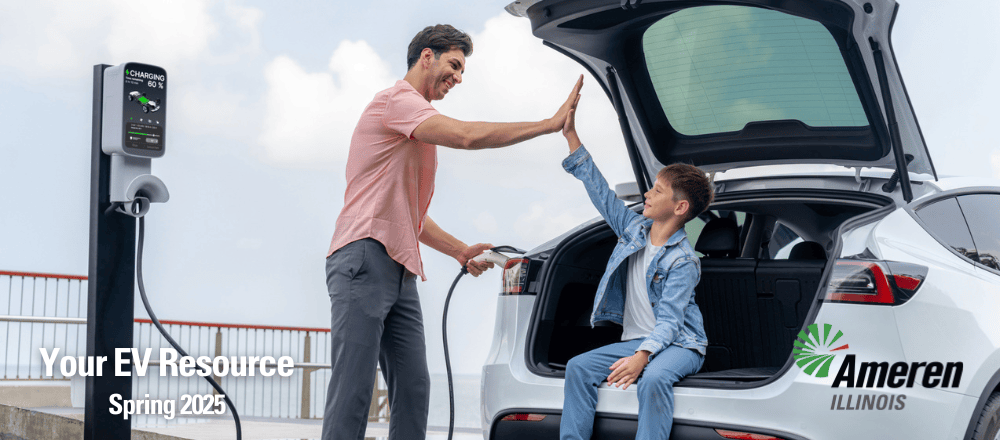
EVs Can Drive Savings
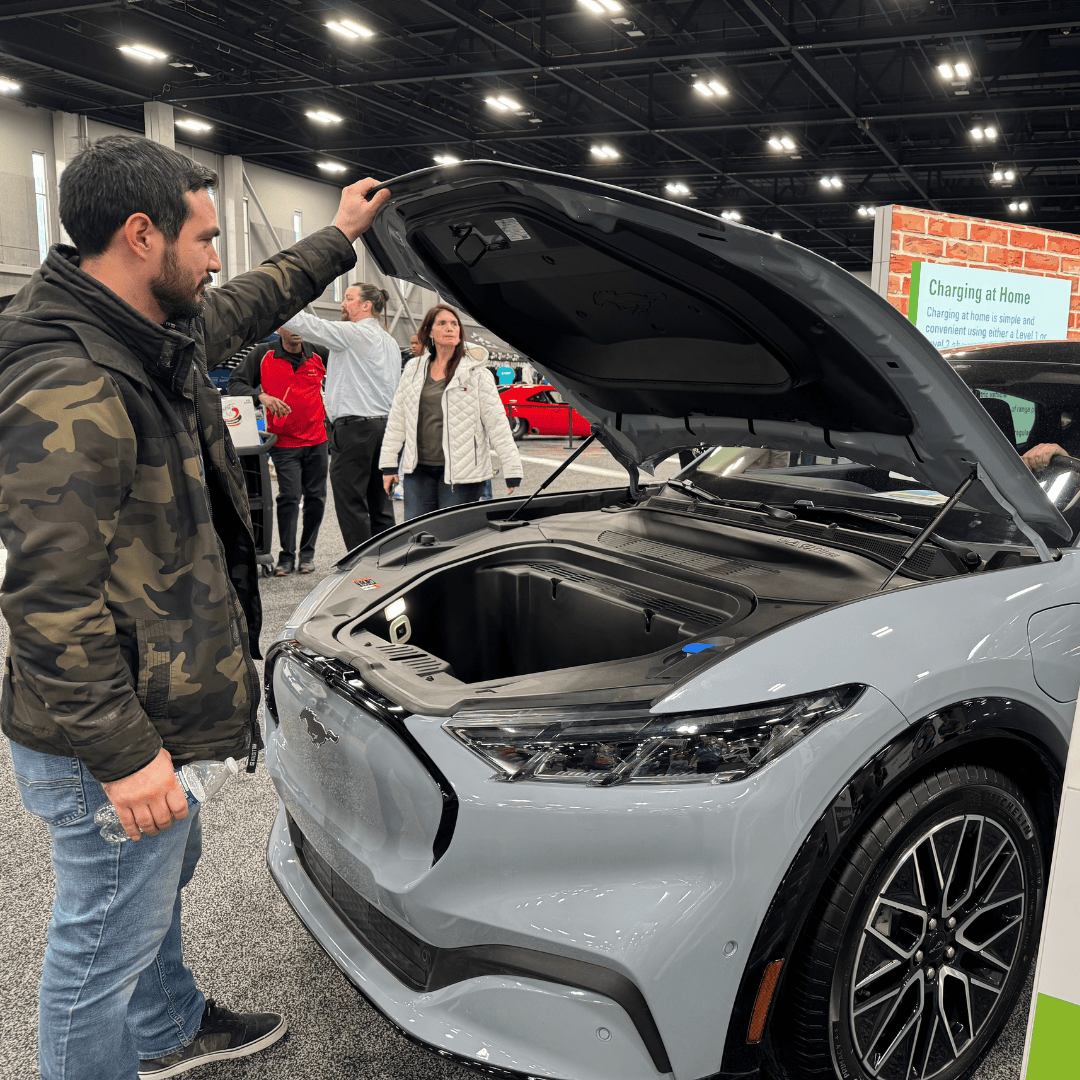

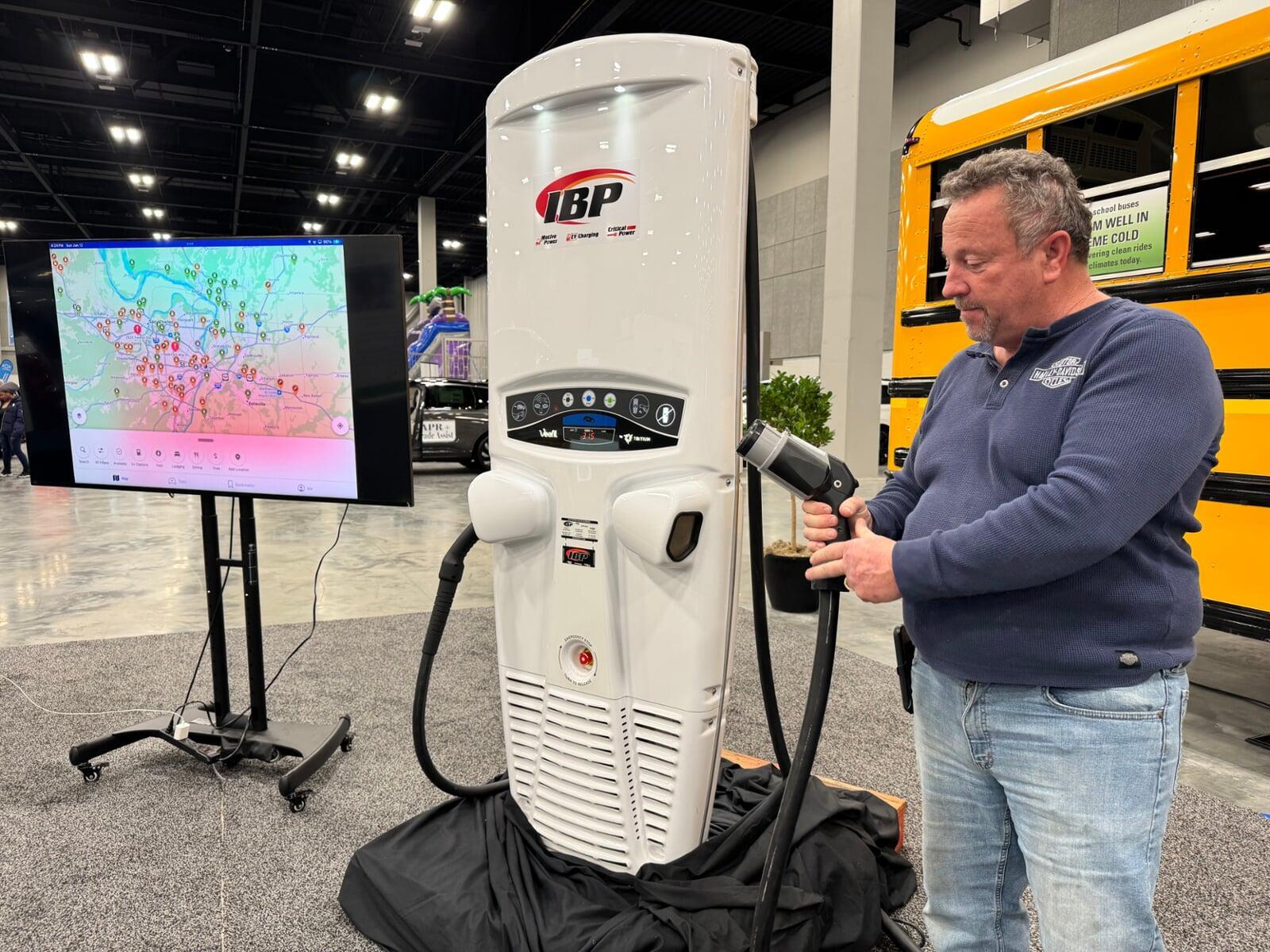

Our customers always want to know the best ways to use our service, and today, that includes electric transportation. Ameren brings the EV experience directly to customers. Our outreach which spans a variety of events—from large auto shows, like the annual St. Louis Auto Show that connects us with more than 8,000 attendees, to more localized neighborhood events where we might engage with around 100 people.
The community events that we sponsor and host offer attendees a hands-on look at the present and future of electric transportation. So, next time you hear that we’re in a community or at an event near you, take the opportunity to learn more about charging your EV and the many ways to save as an EV owner. As more charging infrastructure is unveiled and opportunities like EV leasing provide quick and easy access to electric driving, our resources and programs become even more valuable.
Look to Ameren.com/EV to start your journey or enroll in programs to help you better manage energy use as an EV owner. ChargeSmart allows Ameren Illinois customers to earn a bill credit while charging overnight. Below are key areas to explore related to EV ownership:
- Charging at Home: Many are ready to skip routine gas station visits. The good news is that home charging is simpler and more affordable than expected. EVs plug into a standard wall outlet, making charging easy and accessible. A charger for less than $600 is coming soon on the Ameren Illinois Energy Efficiency Marketplace, and enrolling in ChargeSmart makes it even more cost-effective than annual gas expenses. In fact, home charging can cost the equivalent of just $1 per gallon of gasoline—or even less.
- Charging on the Go: Today in Illinois, there are 4,051 active public charging ports, including 2,728 Level 2 and 1,323 Level 3 Fast Charging.
- EVs for Schools: At the 2025 St. Louis Auto Show, Ameren showcased the impact electric school buses can have on the community. More than just a new way to ride, these buses eliminate diesel fumes, improving air quality for students and the community. They also offer 40% lower maintenance costs and the potential for schools to save up to $100,000 over the bus's lifetime. Talk about a new lesson to learn—this feature was top of the class.
- EV Savings: A major benefit of EV ownership is cost savings. In a side-by-side comparison, Battery Electric Vehicles (BEVs) and Internal Combustion Engine (ICE) vehicles differ in key areas—from fewer moving parts and lower maintenance costs to long-term fuel savings. Wondering how an EV might fit your budget? Use our Savings Calculator to compare costs and see your potential savings.

EV Highlights

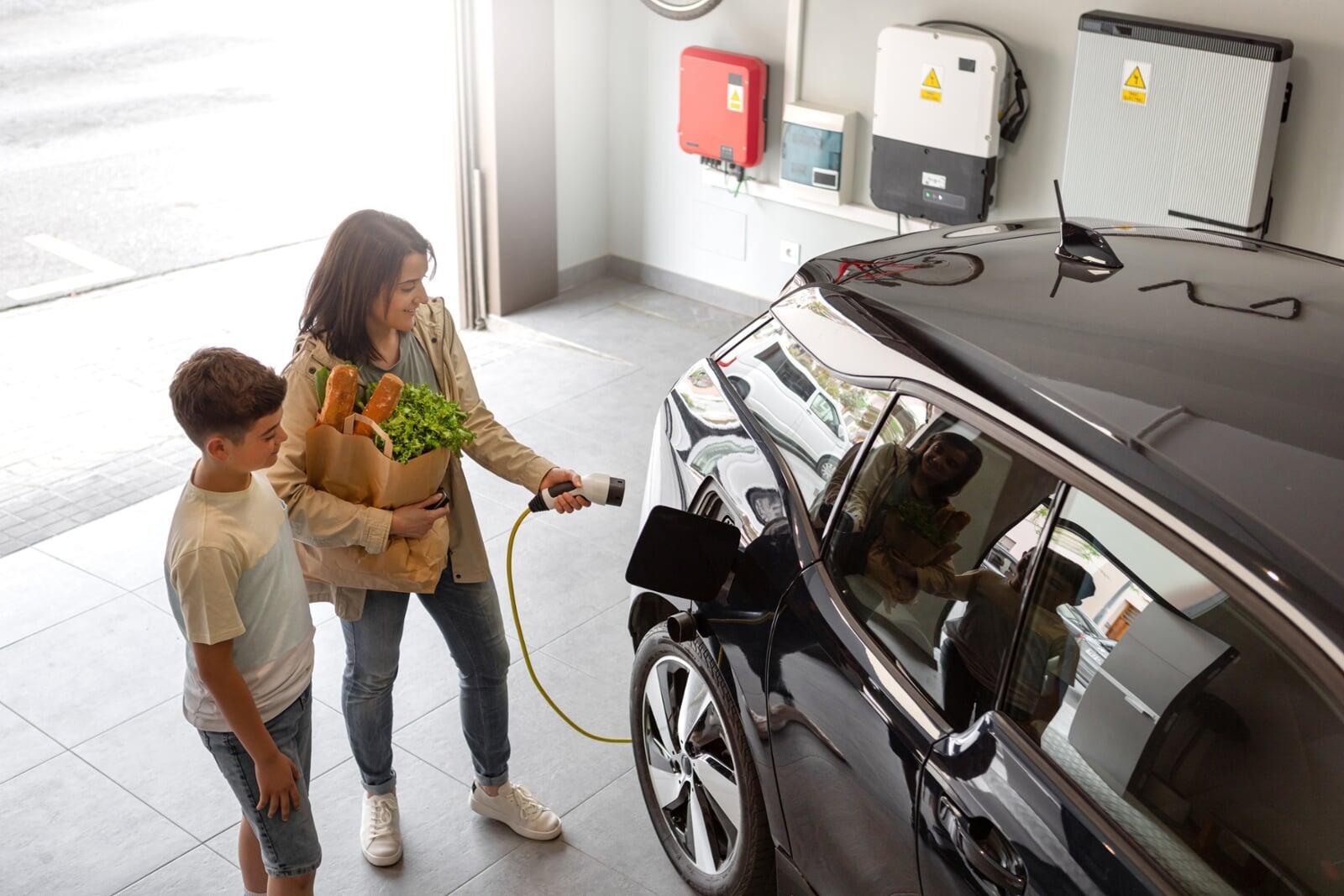
Charge Smart, Save More
The ChargeSmart Program is a charging program that affects all energy used in the household. It offers bill credits and an opportunity to charge overnight for less costs. Residential customers are encouraged to shift high appliance energy usage and EV charging to the preferred charging period.
Eligibility
All Ameren Illinois electric residential customers who own an EV and live in single-family homes or condos with individual metering can enroll in the ChargeSmart program.
Preferred Charging Periods
The ChargeSmart Program is a charging program that affects all energy used in the household. It offers bill credits and an opportunity to charge overnight for less costs. Residential customers are encouraged to shift high appliance energy usage and EV charging to the preferred charging period.
Eligibility
All Ameren Illinois electric residential customers who own an EV and live in single-family homes or condos with individual metering can enroll in the ChargeSmart program.
Preferred Charging Periods
- Preferred Charging Period (PCP): 11 p.m.–7 a.m. A bill credit for your electric delivery service is given for every kWh of usage during this period.
- Non-Preferred Charging Period (NPCP): 11 a.m.–7 p.m. During the highest one hour of total household usage from the billing period that occurs within this timeframe, there will be an additional charge for each kWh used.
- Standard Charging Period: 7–11 a.m. and 7–11 p.m. There are no additional credits or charges for electric usage during this time period.
Key Benefits
Key Benefits
- Monthly Bill Credit Savings: ChargeSmart offers total savings of $48, providing a $4 monthly bill credit for the first 12 consecutive months. This helps offset energy costs during non-preferred hours while giving residents time to adjust their charging habits for even greater long-term savings.
- Efficient Energy Use: Residents can further reduce costs by shifting EV charging and other high-energy activities to the preferred charging period, when overall energy usage is lower.
- Rebate Opportunity: Some customers may be eligible for a rebate to install EV charging stations. Contact our Ameren Illinois EV Partner Network for support and guidance at AmerenEVPartners.com
For more information, visit AmerenIllinois.com/ChargeSmart.
For more information, visit AmerenIllinois.com/ChargeSmart.

Ask the Ameren EV Expert

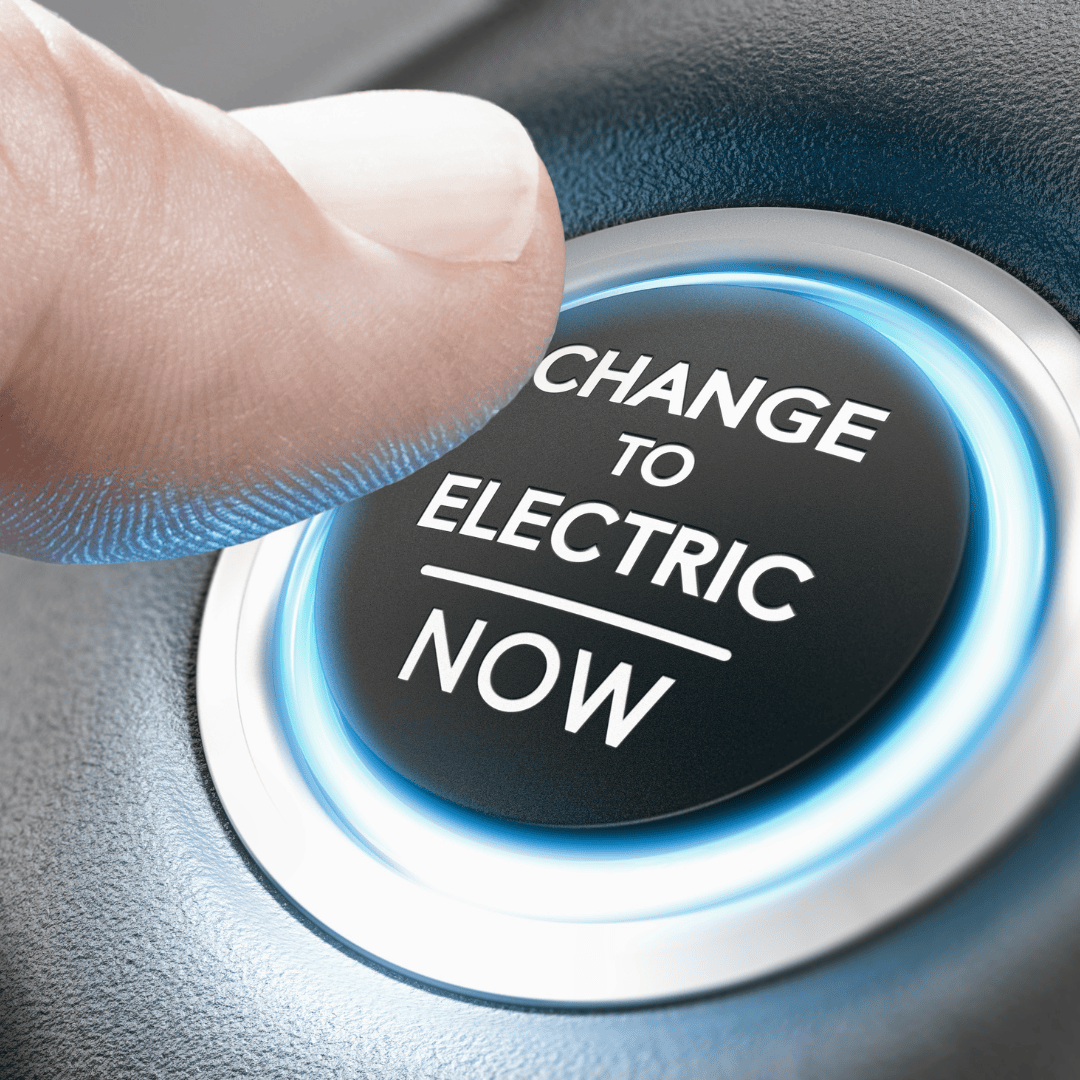
The Long-Term Savings of Driving Electric
Consumer Reports found that EV drivers can save between $6,000 and $10,000 over the life of their vehicle compared to gas-powered cars. When you factor in the full cost of ownership—including fuel, maintenance, and repairs—EVs often come out ahead. So if you’ve ever assumed EVs are too expensive, it might be time to take a closer look.
EVs Cost Less to Maintain
One of the biggest differences between gas cars and EVs is maintenance. A traditional car has around 2,000 moving parts that require servicing over time. An EV? Just 20. Fewer components mean fewer breakdowns, lower maintenance costs, and less time at the mechanic. And with no complex engine or transmission, there’s less need for fluids.
Consumer Reports found that EV drivers can save between $6,000 and $10,000 over the life of their vehicle compared to gas-powered cars. When you factor in the full cost of ownership—including fuel, maintenance, and repairs—EVs often come out ahead. So if you’ve ever assumed EVs are too expensive, it might be time to take a closer look.
EVs Cost Less to Maintain
One of the biggest differences between gas cars and EVs is maintenance. A traditional car has around 2,000 moving parts that require servicing over time. An EV? Just 20. Fewer components mean fewer breakdowns, lower maintenance costs, and less time at the mechanic. And with no complex engine or transmission, there’s less need for fluids.
- No oil changes, transmission fluids, or exhaust system issues
- Brakes last longer thanks to regenerative braking
- Half the lifetime maintenance costs compared to a gas-powered vehicle
These savings add up fast—EV owners save an average of $4,600 on maintenance over the life of their vehicle.
EVs Are 71% More Efficient Than Gas Cars
According to FuelEconomy.gov, gasoline engines waste a significant amount of energy through heat and friction, operating at just 16-25% efficiency. In contrast, battery electric vehicles (BEVs) are 87-91% efficient, meaning they convert far more energy into actual movement. Based on these efficiency differences, EVs are about 71% more efficient than gasoline cars, making them a much more energy-efficient choice.
What does that mean for you? Lower fuel costs and greater savings.
These savings add up fast—EV owners save an average of $4,600 on maintenance over the life of their vehicle.
EVs Are 71% More Efficient Than Gas Cars
According to FuelEconomy.gov, gasoline engines waste a significant amount of energy through heat and friction, operating at just 16-25% efficiency. In contrast, battery electric vehicles (BEVs) are 87-91% efficient, meaning they convert far more energy into actual movement. Based on these efficiency differences, EVs are about 71% more efficient than gasoline cars, making them a much more energy-efficient choice.
What does that mean for you? Lower fuel costs and greater savings.
- The cost to charge an EV at home is about the equivalent of paying $1 per gallon of gas
- On average, EV drivers save up to $1,300 a year on fuel
- Over five years, that’s more than $6,500 in fuel savings
If you're considering an EV, Ameren Illinois has the tools to help you make an informed decision. Visit the EV Comparison Tool to explore different models, compare prices, and estimate fuel and maintenance savings based on your driving habits.
If you're considering an EV, Ameren Illinois has the tools to help you make an informed decision. Visit the EV Comparison Tool to explore different models, compare prices, and estimate fuel and maintenance savings based on your driving habits.

EV Insights


Older EV Models? Here's How to Stay Powered Up with an Adapter
As the EV market transitions to the new North American Charging Standard (NACS or J3400), owners of older EV models may have concerns about charging compatibility. The good news? Adapters are available to ensure that you can still access all public charging options—no need to fear!
NACS, originally developed by Tesla, is becoming the dominant charging standard as more automakers adopt it for their future EV models. While newer EVs (2025 and later) may come equipped with a built-in NACS port, older models—typically those produced before 2025—will likely need an adapter to access NACS chargers.
Adapters are small devices that connect to a charging station's power source and then to a car's charging port, ensuring compatibility across different charging standards. Designed for convenience, they are compact and easy to store in your vehicle. These adapters are especially useful for EV owners who charge at various station types. As the market transitions to the NACS standard, they are quickly becoming an essential accessory for many drivers. Learn more about EV adapters.
The main types of adapters that ensure compatibility across different charging standards:
As the EV market transitions to the new North American Charging Standard (NACS or J3400), owners of older EV models may have concerns about charging compatibility. The good news? Adapters are available to ensure that you can still access all public charging options—no need to fear!
NACS, originally developed by Tesla, is becoming the dominant charging standard as more automakers adopt it for their future EV models. While newer EVs (2025 and later) may come equipped with a built-in NACS port, older models—typically those produced before 2025—will likely need an adapter to access NACS chargers.
Adapters are small devices that connect to a charging station's power source and then to a car's charging port, ensuring compatibility across different charging standards. Designed for convenience, they are compact and easy to store in your vehicle. These adapters are especially useful for EV owners who charge at various station types. As the market transitions to the NACS standard, they are quickly becoming an essential accessory for many drivers. Learn more about EV adapters.
The main types of adapters that ensure compatibility across different charging standards:
- J1772-to-NACS adapter: Allows EVs with J1772 ports—the standard for Level 1 and Level 2 AC charging—to connect to NACS charging stations, ensuring older models can use the expanding NACS infrastructure.
- CHAdeMO-to-NACS adapter: Designed for vehicles that use the CHAdeMO fast-charging standard, primarily found in Japanese EV models like those from Nissan and Mitsubishi. This adapter enables access to NACS-compatible fast chargers.
- NACS-to-CCS/J1772 adapter: As the charging infrastructure transitions to NACS, some newer EVs equipped with NACS ports may need an adapter to charge at existing CCS or J1772 charging stations. These adapters ensure that NACS-compatible vehicles can still access a wide range of charging locations, maintaining flexibility and convenience during the transition period.
While some dealerships include adapters when you purchase a new or used EV, it’s important to ask about them—especially if you’re buying a pre-owned vehicle. Make sure to inquire about the right adapter for your car to avoid any surprises down the road.
Not all adapters are created equal, and using the wrong one could lead to compatibility issues or even damage your vehicle. Before purchasing, check with your EV manufacturer to see if adapters are recommended for your make and model. Many automakers provide guidance on approved adapters that ensure safe and reliable charging. Avoid buying the first adapter you find online—do your research and choose one that meets your vehicle’s specifications.
With the right adapter in hand, you can confidently charge your EV at a wide range of stations, keeping your driving experience as smooth and efficient as ever.
